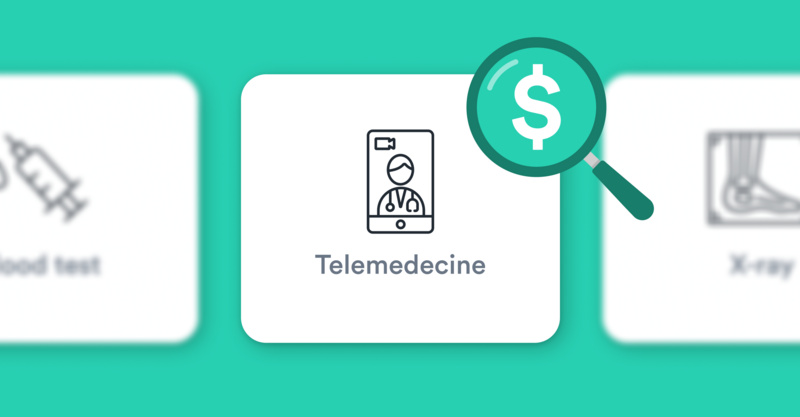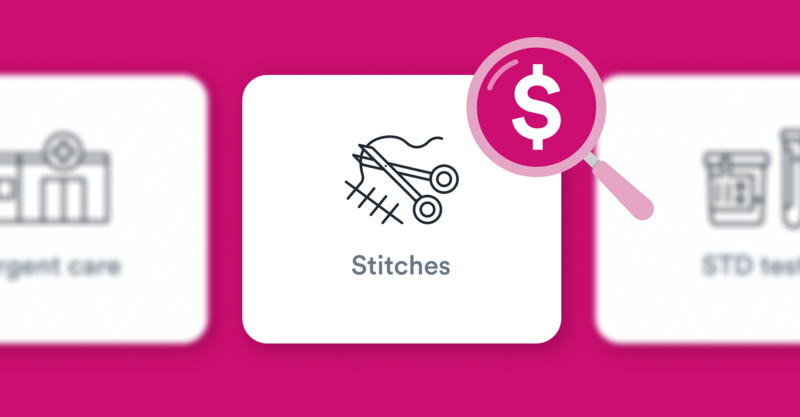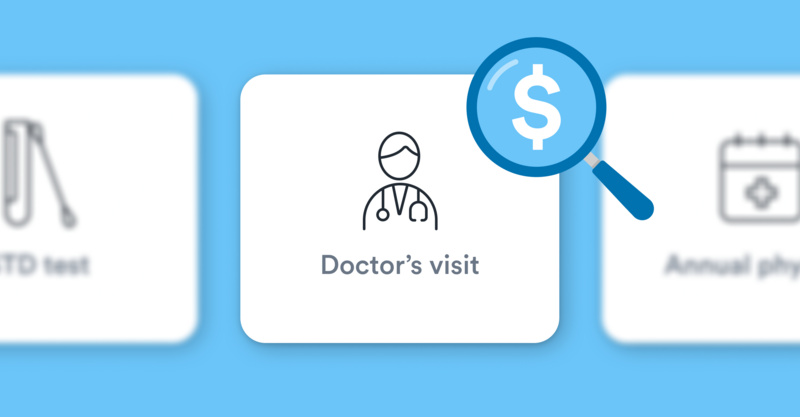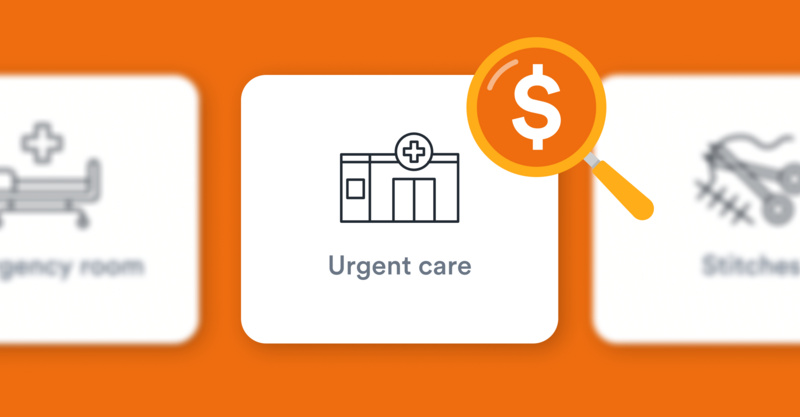Key Points
- A study at Penn State found that the average cost of an urgent care visit was $171
- If you have insurance, the typical copay at urgent care is between $40 and $75, with additional services and treatment costing more.
We all know that convenience costs more. For example, buying a container of pre-washed, chopped vegetables often costs double to triple the amount that buying the vegetable whole does. Retailers know that people will pay for the convenience of having one less thing to do. If that’s the case, then the same must be true for visiting urgent care, right? Not quite.
When you have a minor, acute medical need, urgent care is often far more convenient than going to the emergency room or your primary doctor’s office. It’s also very cost-effective — whether you have insurance or not. Still, healthcare costs are confusing and often leave people with unanswered questions (and big medical bills).
Below, you’ll find a breakdown of what you might expect to pay at urgent care, based on several insurance scenarios, starting with a basic understanding of urgent care costs.
How much does urgent care cost?
The cost of an urgent care center (or any healthcare provider for that matter) is really a function of circumstance and need. It's one of the more frustrating and confusing things about the American healthcare system today. For instance, as defined below, visiting the same urgent care as an insured patient vs an uninsured patient could result in a very different financial outcome.
A study at Penn State found that the average cost of an urgent care visit was $171, which is far less than an average ER visit. Of course, how much you’ll pay out of pocket depends on whether you have insurance or not, and whether you take steps to make the cost more predictable and affordable.
Generally, however, you will pay for the cost of the visit itself plus the cost of any additional services, tests, or treatments. A few of those include the following:
- Medications & injections. Uninsured patients will be charged for medications, injections, and IVs. If they inform the medical staff that they do not have insurance, the doctor and nurses might find generic substitutes for expensive name-brand medicines. If the patient wants an immunization, the office fee might be waived as this does not require a doctor, but the cost of the shot will still apply.
- Tests & X-rays. Tests and x-rays cost an additional amount over the base price of urgent care service. Depending upon the test this could be quite costly. However, tests and x-rays completed at urgent care centers are significantly cheaper than those done in emergency rooms.
- Casting broken bones. If a patient has a broken bone or a sprain, the cost of casting or bracing the bone will be extra. Bracing is more expensive than casting because the patient gets to keep an expensive brace, whereas casting uses gauze.
How much will an urgent care visit cost with insurance?
Typically, insurance does cover urgent care visits. How much you pay out-of-pocket depends on several factors, including:
- Whether you’ve met your deductible
- How much your co-pay is
- Whether your insurance plan includes co-insurance
- Whether the urgent care center is in- or out-of-network
Let’s take a look at how each of these could affect how much you pay for an urgent care visit.
If you have insurance and you’ve already met your deductible…
If you need immediate medical care, but you’re not in a life-threatening situation, a walk-in clinic is likely to be perfect for your needs. Will your insurance pay the full cost?
A deductible is an amount you pay for healthcare before your insurance starts to pay. If you’ve met your deductible, you’ll only owe your copay at the time of your urgent care visit. The typical copay at urgent care is between $40 and $75, though this depends on your insurance.
It’s the insurance company that sets the copay, not the urgent care center. If you’re not sure what your copay is, you can call your insurance provider directly to find out.
The only exception to this is if your insurance plan includes co-insurance. Co-insurance is a “fixed percentage of costs of a covered health service you pay after you’ve met your deductible.”
So, if you’ve already met your deductible and you have co-insurance, you’ll have to pay a percentage of the cost of the urgent care visit, along with your co-pay. The good news here is that even if you do have to pay your co-pay and co-insurance, you’ll still likely be paying less than you would at the ER or your doctor’s office.
Keep in mind that this example assumes that the urgent care clinic is within your insurance plan’s provider network. Most insurance plans do not cover non-emergency out-of-network care, so be sure you know which urgent care centers are part of your plan before the need arises.
If you have insurance but haven’t met your deductible…
Even with insurance, medical care isn’t free. You’ll need to pay your annual deductible before your medical coverage will kick in. And, after your deductible, you’ll still be responsible for a copay or coinsurance.
If you haven’t met your deductible at the time of your urgent care visit, you may have to pay the full cost of the visit. If you’re included in the nearly 50% of Americans who have a high deductible health plan (HDHP), this is a more likely scenario.
The minimum yearly deductible for an individual HDHP in 2022 is $1,400. Families are looking at a minimum annual deductible of $2,800. If you haven’t paid those minimum amounts, you’ll have to pay out-of-pocket for your urgent care visit.
Wait, there’s good news. A visit to urgent care — even if you have to pay out-of-pocket — is still less expensive than going to the ER. On average, urgent care visits cost between $100 and $200. ER visits are significantly more, usually over $2,000.
To give you an idea of what you’ll pay (and save you the most money), Solv displays the out-of-pocket prices for the urgent care clinics we recommend.
To get a clear idea of the out-of-pocket cost of urgent care, take advantage of the Solv ClearPrice™ tool. You’ll see the cost of care at a variety of urgent care clinics in your area.
It’s a good idea to check with your insurance to see how they cover medical visits, as some plans require only a copay for urgent care visits even if you haven’t met your deductible. Keep in mind that you can only use your insurance coverage if the urgent care clinic is within your plan’s provider network. Call ahead or check your insurance plan to see what providers are within the network.
The cost difference between in-network and out-of-network urgent care centers
While most urgent care centers do accept some forms of insurance, a good question to ask is, is this urgent care center in-network?
When an urgent care center (or any other type of healthcare facility) is in-network, it means that your insurance provider has pre-negotiated rates for healthcare with them. These rates are often lower than their normal fees, making it cheaper for you (if you haven’t met your deductible) and your insurance provider (if you have met your deductible).
If an urgent care center is out-of-network, they can set their own rates — and bill you for the amount that your insurance won’t cover. Increasingly, health insurance plans offer no coverage at all for non-emergency medical care outside of their network, so you may end up paying the full cost.
The urgent care center may say they accept your insurance but what really matters is if they are in-network or out-of-network, so be sure to double-check. When you book an appointment on Solv, you know if you are going to a clinic that takes your insurance.
How much will an urgent care visit cost without insurance?
Don’t have insurance? That’s okay, too. All urgent care clinics on Solv allow you to pay affordable cash prices for visits. The amount you’ll pay depends on what your visit is for.
If you need medical care but don’t have insurance coverage, you’ll discover that urgent care centers cost less than other options. Some clinics even offer a payment plan, while others require payment at the time of service.
When you don’t have insurance, this makes urgent care a much better choice than the ER for minor, acute issues.
When you book an urgent care appointment on Solv, we list the cash/self-pay prices for each clinic, so you know what you’ll be expected to pay ahead of time. If you’re paying for care on your own, let the urgent care center know. Sometimes they’ll offer a discount or interest fee payment plan if they know you don’t have insurance.
This can help you compare prices and know what to expect before you arrive at urgent care. Being prepared helps you plan ahead a bit and bring peace of mind to a stressful situation.
Is urgent care really cheaper than the ER?
Figuring out what you might pay for a doctor’s visit can be incredibly confusing. But it doesn’t have to be. Almost all urgent care clinics take insurance and are far more affordable than a visit to the ER, which could cost you $2000 or more, depending on what you’re being seen for.
Many people go to the ER because they know they’ll have to be treated, even without insurance. Urgent care centers will also treat you without insurance and many will offer payment plans if you can’t pay upfront.
Regardless of how you choose to pay, you’ll end up spending a lot less using Solv to visit urgent care than you would at the ER. Solv brings transparency to your visit costs so that you can make an informed choice about where to go the next time you need same-day medical attention.
Urgent care clinics can be a great way to get affordable medical care, especially when you know what to expect before you arrive.
Solv has strict sourcing guidelines and relies on peer-reviewed studies, academic research institutions, and medical associations. We avoid using tertiary references.


 LinkedIn
LinkedIn









